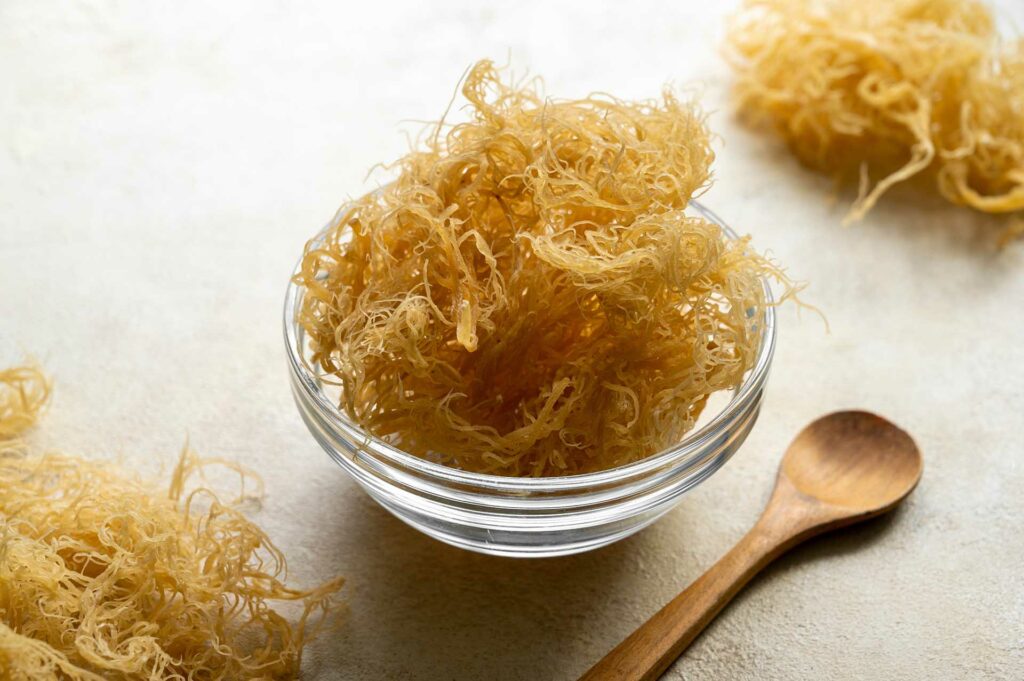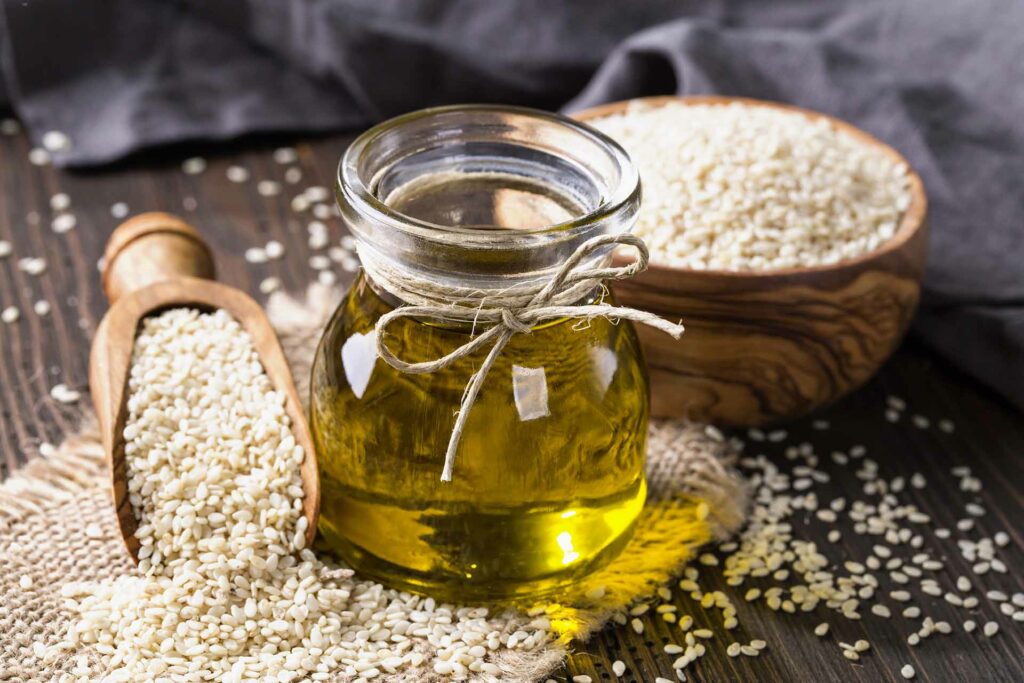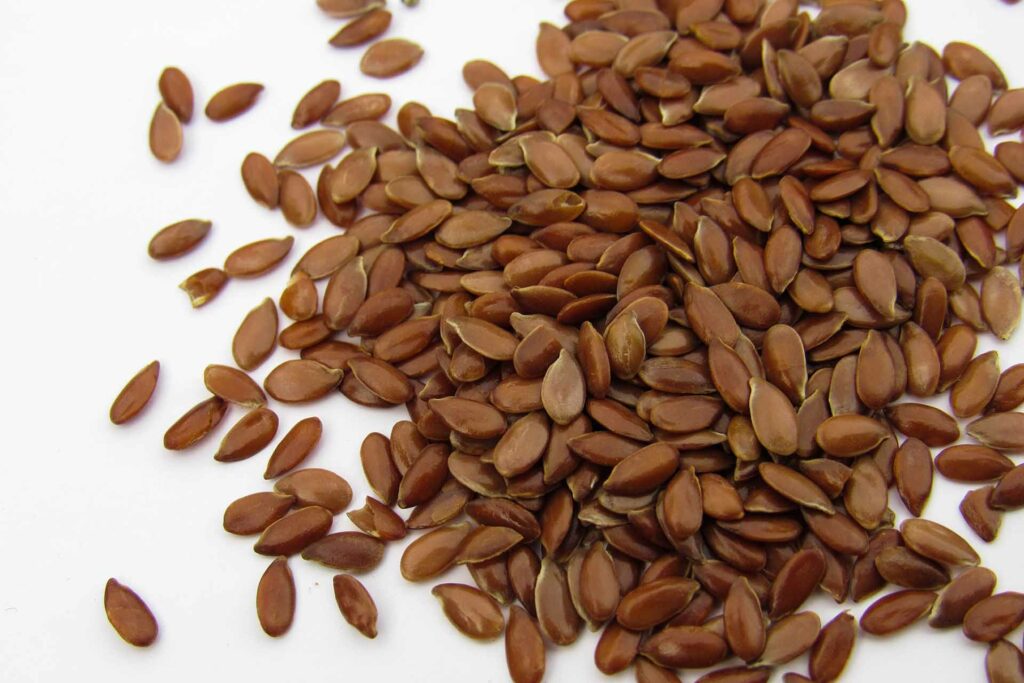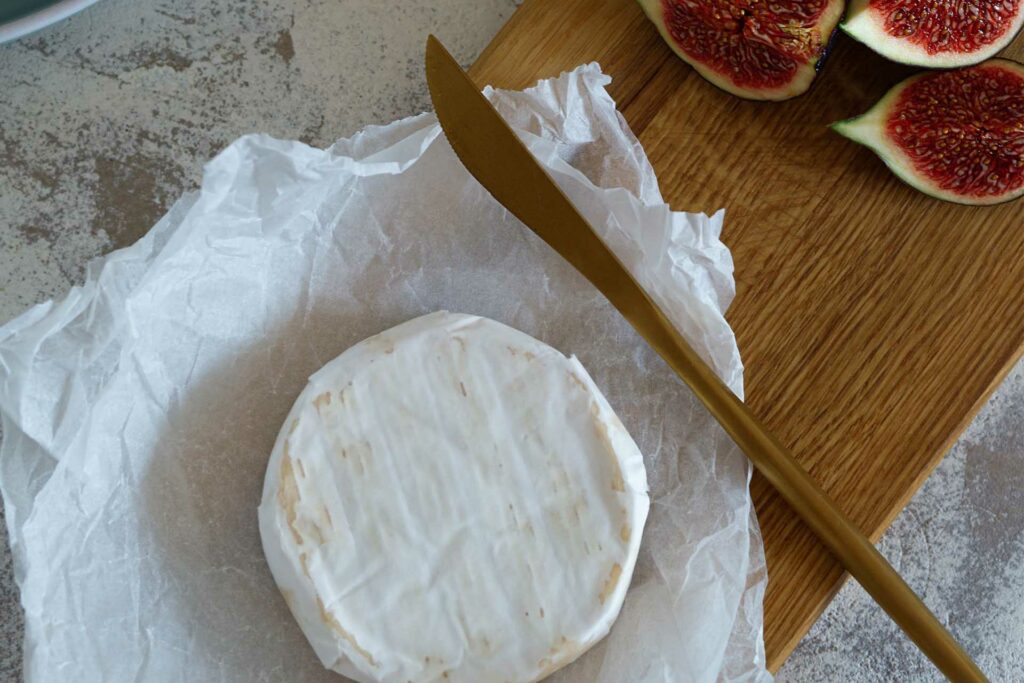Sea moss, also known as Irish Moss (Chondrus crispus), is a type of red algae that grows along the rocky coastlines of the Atlantic Ocean, particularly in regions like Ireland, Scotland, and the Caribbean. It has been utilized for centuries in various cultures for its medicinal properties and culinary applications.
Sea moss has a distinctive appearance, with its reddish-brown or purple color and a frond-like structure. It thrives in cool, intertidal zones where it attaches itself to rocks or other substrates. The harvesting process involves carefully removing the sea moss from its natural habitat, ensuring sustainability and minimal impact on the marine ecosystem.
One of the key reasons for the popularity of sea moss is its impressive nutritional profile. It is rich in essential vitamins, minerals, and trace elements, including iodine, iron, magnesium, calcium, and vitamins A, C, E, and K. Sea moss is also a great source of dietary fiber and contains a variety of beneficial polysaccharides, such as carrageenan.
In addition to its nutritional value, sea moss is revered for its potential health benefits. It has long been used in traditional medicine to support respiratory health, boost the immune system, promote digestion, and improve skin health. Furthermore, sea moss is believed to possess anti-inflammatory, antiviral, and antimicrobial properties.
Culinary uses of sea moss vary across different cultures. In Caribbean cuisine, sea moss is commonly used to make a traditional beverage known as “Irish Moss Drink.” This creamy and sweetened drink is made by blending soaked sea moss with ingredients like milk, spices, and sweeteners. Sea moss is also used as a thickening agent in soups, stews, and desserts, providing a natural alternative to gelatin or cornstarch.
As sea moss gains recognition worldwide, its availability has expanded beyond coastal regions. It can now be found in various forms, including dried, powdered, or pre-soaked. This allows for convenient usage and easy incorporation into a wide range of recipes.
Taste Profile of Sea Moss
Sea moss offers a unique taste experience that sets it apart from other ingredients. When consumed in its raw form, sea moss has a slightly salty and briny flavor, reminiscent of the ocean from which it is harvested. This natural saltiness adds depth to dishes and enhances the overall taste profile.
The texture of sea moss can vary depending on its preparation. When raw, sea moss has a firm and slightly chewy consistency, similar to gelatin. This texture lends itself well to recipes that require a bit of bite or chew, such as salads or seafood dishes. However, once soaked or cooked, sea moss transforms into a softer and more gel-like texture, making it ideal for creating smooth and creamy recipes like puddings, smoothies, and sauces.
While the taste of sea moss itself is distinctive, it also has the ability to absorb the flavors of other ingredients it is combined with. This makes it a versatile ingredient that can be tailored to suit various culinary preferences. By blending sea moss with fruits, spices, or other ingredients, you can create a wide range of flavor combinations that complement its natural taste.
It is important to note that the taste of sea moss can be influenced by several factors. The location where it is harvested plays a significant role, as sea moss absorbs the flavors and minerals from its surrounding environment. Sea moss harvested from different regions may have subtle variations in taste. Additionally, the cleanliness and quality of the water in which it grows can impact its taste as well.
The processing methods and preparation techniques used also contribute to the overall taste of sea moss. Some people prefer to rinse and soak sea moss before using it to remove any impurities or excess saltiness. Others may opt to blend or cook sea moss to achieve a smoother texture and mellow out the flavor. These preparation techniques can alter the taste profile of sea moss and allow for greater versatility in cooking.
Comparing the Taste of Various Types of Sea Moss
Sea moss comes in different varieties, each with its own distinct taste profile. Let’s explore the flavors of some of the most popular types of sea moss and discover how they differ from one another.
1. Irish Moss (Chondrus crispus)
Irish Moss is perhaps the most well-known variety of sea moss. It has a mild and slightly sweet taste, with subtle hints of brininess. The texture of Irish Moss is smooth and gel-like, making it ideal for creating creamy desserts like puddings and custards. Its neutral flavor allows it to blend well with other ingredients, making it a versatile choice for both sweet and savory recipes.
2. Bladderwrack (Fucus vesiculosus)
Bladderwrack is another type of sea moss that is often used for its medicinal properties. It has a stronger and more pronounced flavor compared to Irish Moss. Bladderwrack has a distinct umami taste with a hint of saltiness. Its texture is slightly chewy, adding a satisfying bite to dishes. Due to its stronger flavor, Bladderwrack is commonly used in savory recipes such as soups, broths, and stews, where it can enhance the overall taste profile.
3. Gracilaria (Gracilaria spp.)
Gracilaria is a type of sea moss that offers a delicate and milder taste compared to Irish Moss and Bladderwrack. It has a subtle briny flavor with a hint of sweetness. Gracilaria is known for its tender and slightly crunchy texture, making it a popular choice for salads and seafood dishes. It adds a refreshing and oceanic element to recipes, enhancing the overall taste experience.
4. Other Sea Moss Varieties
Apart from the above-mentioned varieties, there are several other types of sea moss that each offer their own unique taste profiles. The taste of these varieties can vary depending on factors such as the location of harvest, water quality, and processing methods. Some varieties may have a more pronounced briny taste, while others may be milder or sweeter. Exploring these different types of sea moss allows for a diverse culinary experience and the opportunity to discover new and exciting flavors.
When incorporating different types of sea moss into your recipes, it is important to consider the specific taste profile of each variety. This will help you choose the most suitable sea moss for your desired dish and ensure a harmonious flavor balance.
Culinary Uses and Recipes with Sea Moss
Sea moss has long been celebrated for its culinary versatility, and it can be incorporated into a wide range of recipes to enhance both flavor and texture. Let’s explore some traditional and modern uses of sea moss in the culinary world.

Traditional Recipes Featuring Sea Moss
- Irish Moss Pudding: Irish Moss is commonly used to create a creamy and indulgent pudding. Blended with ingredients like milk, sweeteners, and spices, Irish Moss transforms into a luscious dessert that showcases its smooth texture and delicate flavor. This traditional Irish treat is enjoyed by many for its rich taste and nutritional benefits.
- Sea Moss Smoothies: Sea moss can be added to smoothies to create a nutritious and refreshing beverage. Blending sea moss with fruits, vegetables, and other ingredients not only adds creaminess but also enhances the nutritional value of the smoothie. Sea moss smoothies are an excellent way to incorporate this seaweed into your daily diet.
- Sea Moss Gels and Sauces: Sea moss can be transformed into a gel or sauce by blending it with water or other liquids. This gel-like consistency makes it a versatile ingredient for creating thick and flavorful sauces. Sea moss gels can be used as a base for dressings, spreads, or even as a natural thickening agent in soups and gravies.
Modern and Innovative Uses of Sea Moss in Cooking
- Sea Moss as a Thickening Agent: Due to its natural gelling properties, sea moss can be used as a vegan alternative to traditional thickeners like gelatin or cornstarch. It adds a smooth and creamy texture to dishes, making it an ideal choice for creating plant-based desserts, sauces, and even vegan cheese.
- Sea Moss as a Vegan Alternative: Sea moss is highly sought after in the vegan community due to its versatility and nutritional benefits. It can be used to replace dairy or eggs in various recipes, such as plant-based milk, vegan ice cream, or egg-free baked goods. Sea moss provides a natural plant-based alternative that adds texture and richness to vegan dishes.
- Sea Moss in Desserts and Baked Goods: Sea moss can elevate the flavors and textures of desserts and baked goods. From cakes and cookies to pies and tarts, sea moss can be incorporated into a wide range of sweet treats. Its unique taste and gelling properties add depth and complexity to desserts, making them even more indulgent.
When incorporating sea moss into your cooking, it is important to consider a few tips. Properly cleaning and preparing sea moss is crucial to ensure its optimal taste and texture. Soaking sea moss in water before use helps remove any impurities and excess saltiness. Additionally, finding the right sea moss-to-recipe ratio is key to achieving the desired consistency and taste.
Where to Find and Buy Sea Moss
If you’re ready to embark on your culinary journey with sea moss, you may be wondering where to find and buy this nutrient-rich seaweed. Fortunately, there are several options available to help you obtain high-quality sea moss.
Local Sources of Sea Moss
- Coastal Regions and Seafood Markets: If you live in or near coastal regions, you may have the opportunity to source sea moss directly from the ocean. Local seafood markets and vendors often carry freshly harvested sea moss, allowing you to experience the taste and quality of this seaweed firsthand. Keep an eye out for sea moss at farmers’ markets or specialty shops near coastal areas.
- Seaweed Farms and Aquaculture Facilities: Seaweed farming has gained popularity in recent years, making it easier to find sustainably cultivated sea moss. These farms grow sea moss in controlled environments, ensuring its quality and minimizing environmental impact. Some farms may offer direct sales to the public, allowing you to purchase fresh or dried sea moss directly from the source.
Online Retailers and Specialized Shops for Sea Moss
- Popular Websites for Purchasing Sea Moss: The digital age has made it convenient to buy sea moss online. Several reputable websites specialize in selling sea moss and other seaweed products. These online retailers often provide detailed information about the type of sea moss they offer, including its origin and quality. You can browse through a wide range of options, compare prices, and read customer reviews to make an informed decision.
- Considerations When Buying Sea Moss Online: When purchasing sea moss online, it is essential to consider a few factors. Look for websites that prioritize the freshness and quality of their products. Opt for retailers that source their sea moss from reputable suppliers and ensure sustainable harvesting practices. Reading customer reviews and recommendations can also give you valuable insights into the reliability and quality of the product.
- Tips for Selecting High-Quality Sea Moss: When selecting sea moss, there are a few indicators of quality to keep in mind. Fresh sea moss should have a vibrant color, ranging from deep purple to reddish-brown, depending on the variety. It should feel slightly damp and pliable, indicating its freshness. Avoid sea moss that appears dry, brittle, or discolored, as these may be signs of poor quality or improper storage.
As sea moss continues to gain popularity, it is important to ensure that you are purchasing from trusted sources that prioritize sustainability and quality. By obtaining high-quality sea moss, you can fully enjoy its taste and reap the maximum health benefits it offers.
Final Thoughts
Sea moss, with its unique taste, versatility, and nutritional benefits, is a true oceanic delight. Throughout this blog post, we have explored the taste profile of sea moss, delving into its texture, flavors, and factors that influence its taste. From its slightly salty and briny raw form to its gel-like texture when soaked or cooked, sea moss offers a culinary experience that is both intriguing and enjoyable.
We have also examined the different types of sea moss, such as Irish Moss, Bladderwrack, and Gracilaria, each with its own distinct taste and culinary applications. Whether you prefer the mild sweetness of Irish Moss, the umami flavor of Bladderwrack, or the delicate brininess of Gracilaria, sea moss provides a wide range of options to suit various culinary preferences.
Furthermore, we have explored the culinary uses and recipes featuring sea moss. From traditional Irish Moss pudding and sea moss smoothies to modern innovations like using sea moss as a vegan alternative or incorporating it into desserts and baked goods, sea moss adds depth, texture, and nutrition to a variety of dishes.
When it comes to sourcing sea moss, you can find it in local coastal regions, seafood markets, or even through seaweed farms and aquaculture facilities. Additionally, online retailers and specialized shops offer convenient access to high-quality sea moss, allowing you to explore its flavors and benefits from the comfort of your own home.
As you embark on your journey with sea moss, remember to consider factors such as freshness, quality, and sustainability when purchasing it. By prioritizing these aspects, you can ensure that you are obtaining the best sea moss available and fully enjoy its taste and nutritional value.





